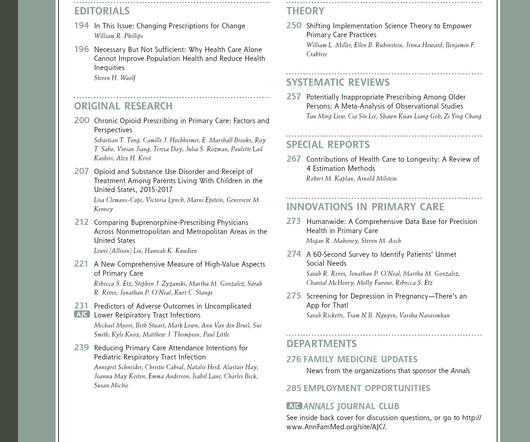Co-development of a public primary care occupational therapy and physical therapy telephone consultation service [Dissemination and implementation research]
Annals of Family Medicine
NOVEMBER 20, 2024
Context: In recent years, given significant challenges with accessing primary care physicians in Canada, there has been increased attention towards involving other health care providers, such as rehabilitation professionals, for managing different conditions.













Let's personalize your content